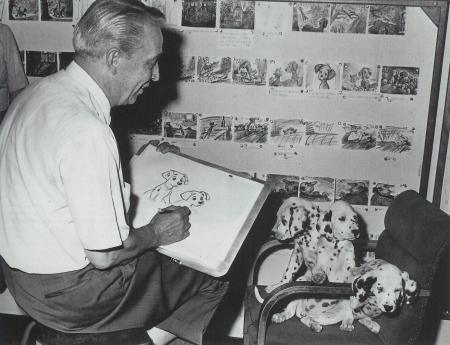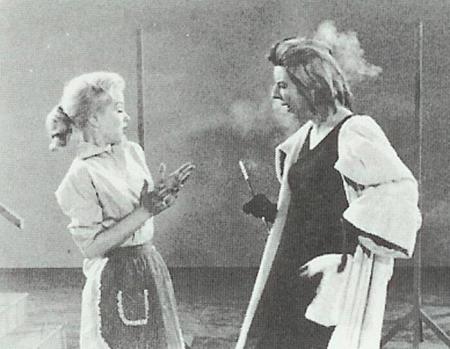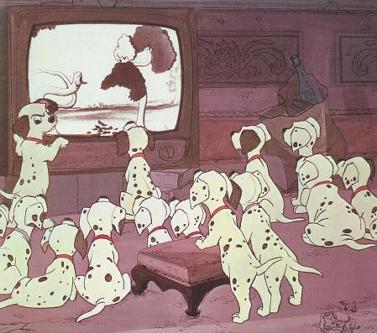Walt Disney Art Classics Convention 2004 - Part 1
Page 3 of 13
Pacheco then showed illustrations of Anita Radcliff. Her designs reflected more the classic Disney heroine. Yet, there was a stylization even in this more “normal�? character. Pacheco then enumerated the many breeds of dog depicted in the film, including Afghan, French Poodle, Sheep Dog, Scottie, Great Dane and, of course, Dalmatian.
Despite the exaggeration called for by the stylization, the lead animators held out for a realistic depiction of the dogs. A photo showed Disney Legend Eric Larsen surrounded by Dalmatian puppies.

Animator Eric Larsen with some lively models.
Pacheco pointed out that, although there were 99 puppies in the film, only six had names: Pepper, Patch, Penny, Rolly, Freckles, and Lucky. The next image Pacheco showed was of Lisa Davis (Anita), Eric Larsen and two adult Dalmatians watching TV together.
Seeing Lisa Davis, Pacheco mentioned the popular myth that Tinker Bell was based on Marilyn Monroe (despite the fact that designs for Tink had been created long before Monroe was active in Hollywood). He went on to say that there was a similar myth connected to Anita Radcliff; that she was based on Julie Andrews. In reality, he said, Anita was based directly on another actress, Helene Stanley. Stanley had also enacted the live action reference footage for Princess Aurora and Cinderella. The conventioneers were then shown a photograph of Helene Stanley in full costume as Anita. The resemblance was unmistakable.

Actresses Helene Stanley and Mary Wickes playing Anita and Cruella.
Another reason for the stylization of 101 Dalmatians, continued Pacheco, was the decision to use the newly developed Xerography process which had been perfected by Disney Legend Ub Iwerks. The process translated animator’s drawings directly onto celluloid. Pacheco stressed that by eliminating the “inking�? step that had been used in previous features, greater spontaneity was preserved. He went on to say that the Xerography process would affect the look of Disney animation for the next 30 years.
Practically, the process made it possible to animate large numbers of puppies. A small group could be animated, and then repeated over and over as necessary. He showed how a group of 24 was repeated nine times under the opening titles, for a total of 216 puppies!
Xerography also made it possible to animate all the spots on all the Dalmatians. It would have been hard enough to keep track of them on one dog, he said. But just multiply that by 101. He detailed how the animators would keep the spots consistent on each puppy. Major spots were placed in key locations, and then the rest were filled in as “constellations.�?

The animators kept track of all these spots and more.
